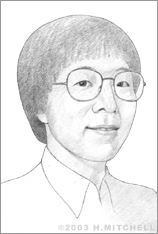Jin-Ping Han
As an Electrical Engineering PhD student at Yale University, one of Jin-Ping Han’s projects turned from a failure to a success very quickly. For over a year, she had been working hard on developing a semiconductor memory device that could store data for a decade or more in a computer’s hardware. When she realized her device had a much shorter memory span than she had hoped for (around ten minutes rather than ten years), she assumed her work had all gone to waste.
But then her advisor, electrical engineering professor Tso-Ping Ma, encouraged her to look at other uses for what she had created. She realized that her device, a new kind of Capacitor-less Dynamic Random Access Memory (DRAM) cell, actually used space much more efficiently than those that were already in use, with faster operating speed, longer data retention, and lower power consumption.
Han’s version of a DRAM cell, which allows computers to save data in memory chips, also featured a simpler structure, meaning it would be easier to manufacture than others. Instead of having at least one transistor and one capacitor in each cell as conventional DRAMs do, Han’s design only has one transistor per cell, with no large storage capacitor. It has the potential to save a great deal of money while increasing storage capacity in a more efficient space.
A native of China who had come to Yale in 1995 as a visiting fellow, Han submitted her project to the BF Goodrich National Collegiate Inventors competition in 1998 and was one of three winners in the “All-Collegiate Category.” She and Ma also received a patent for their invention in May 2000.


